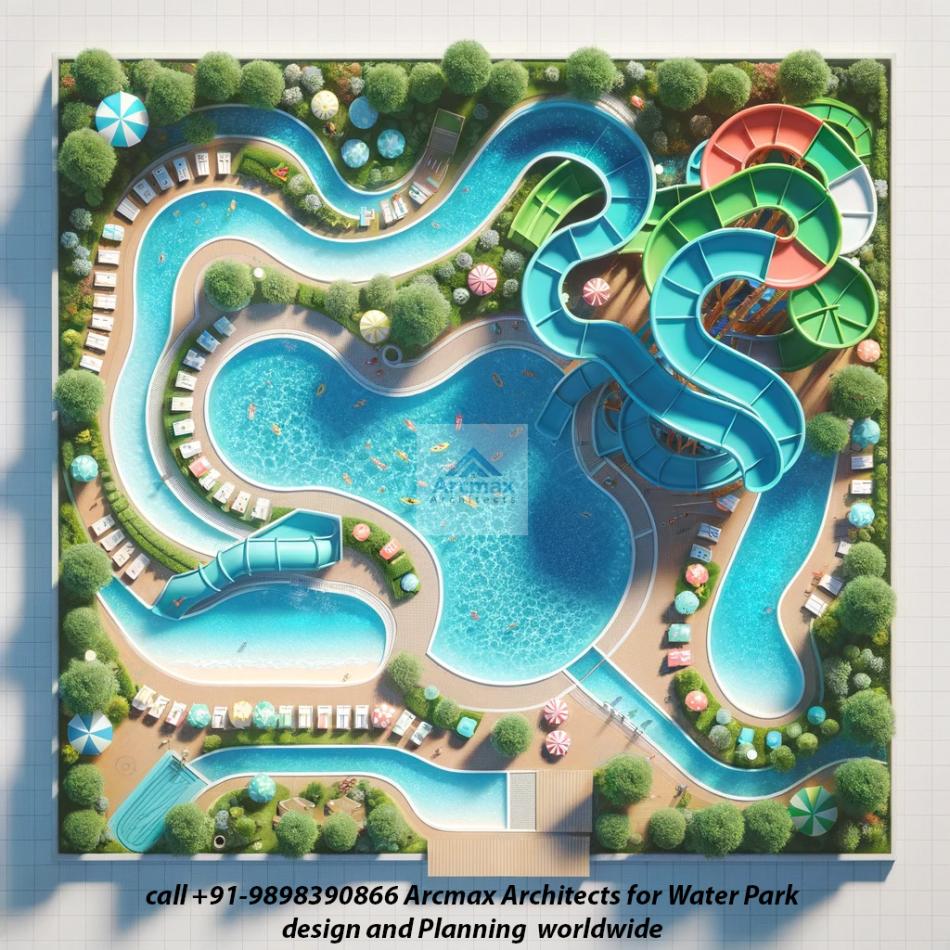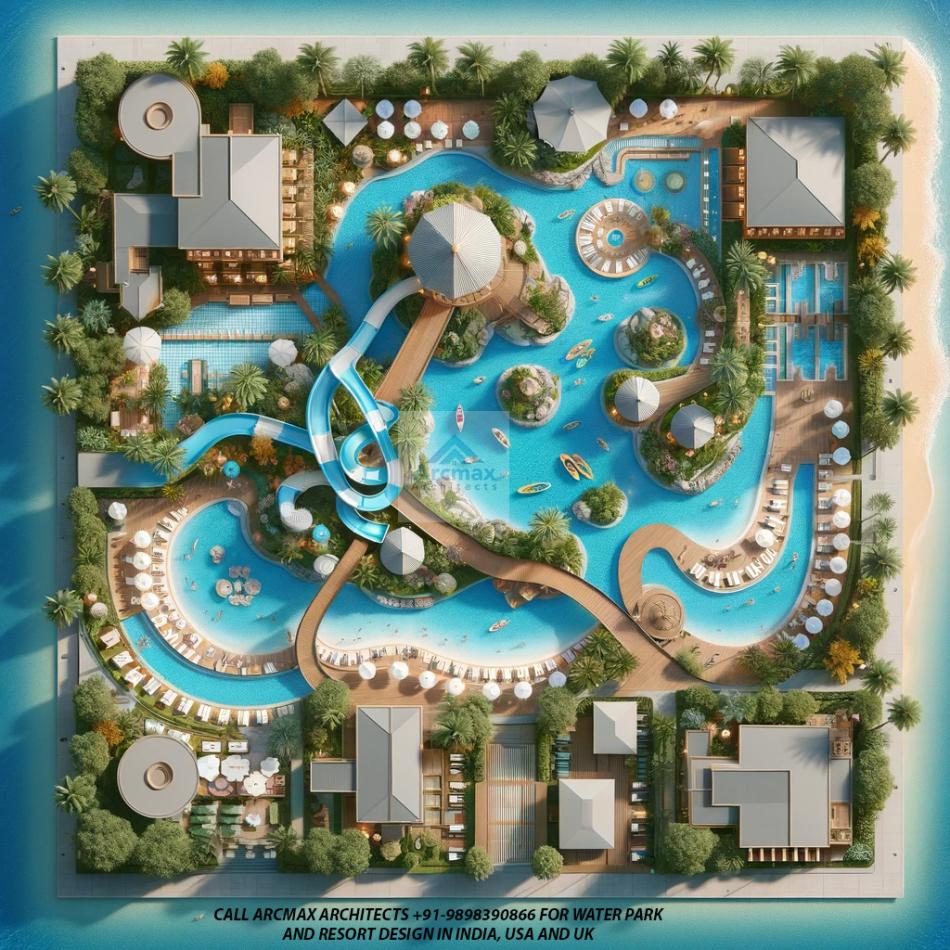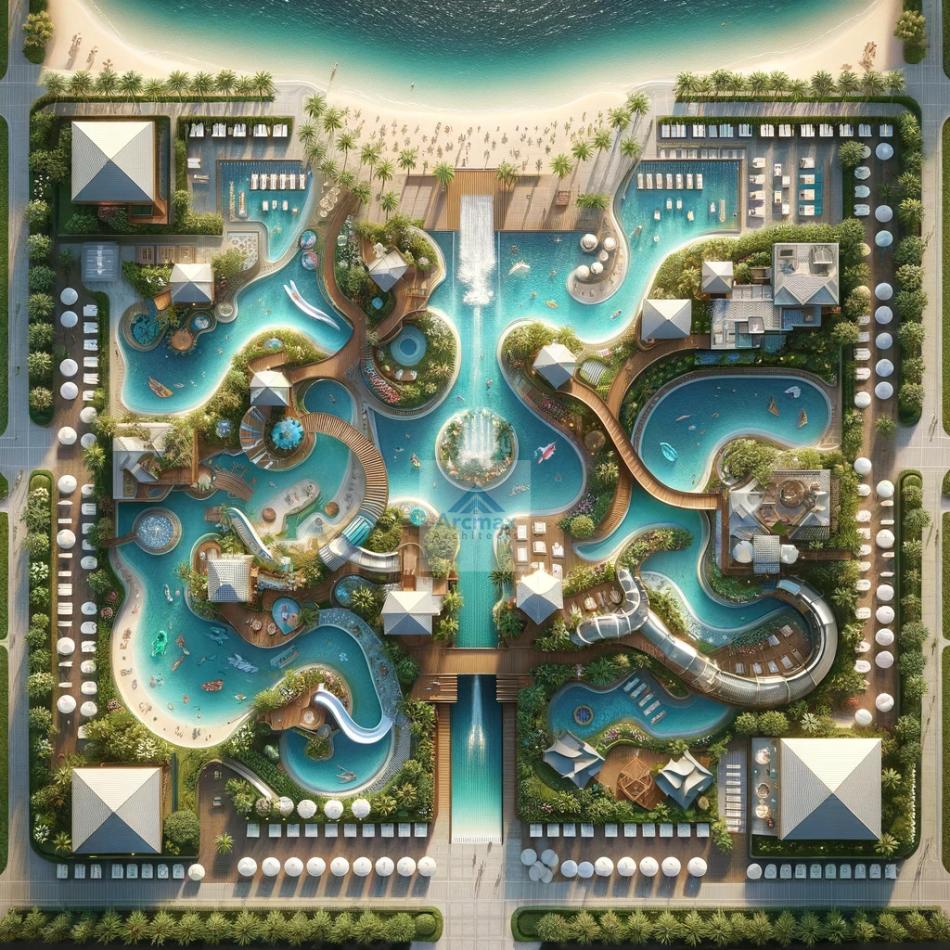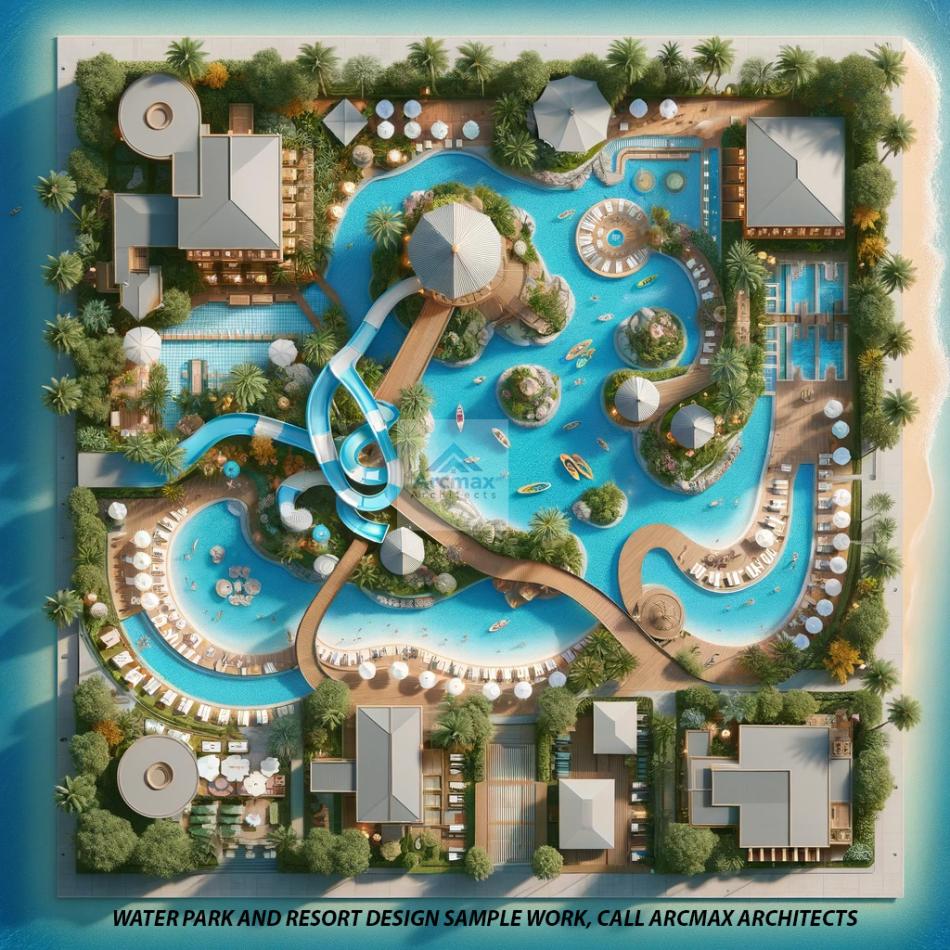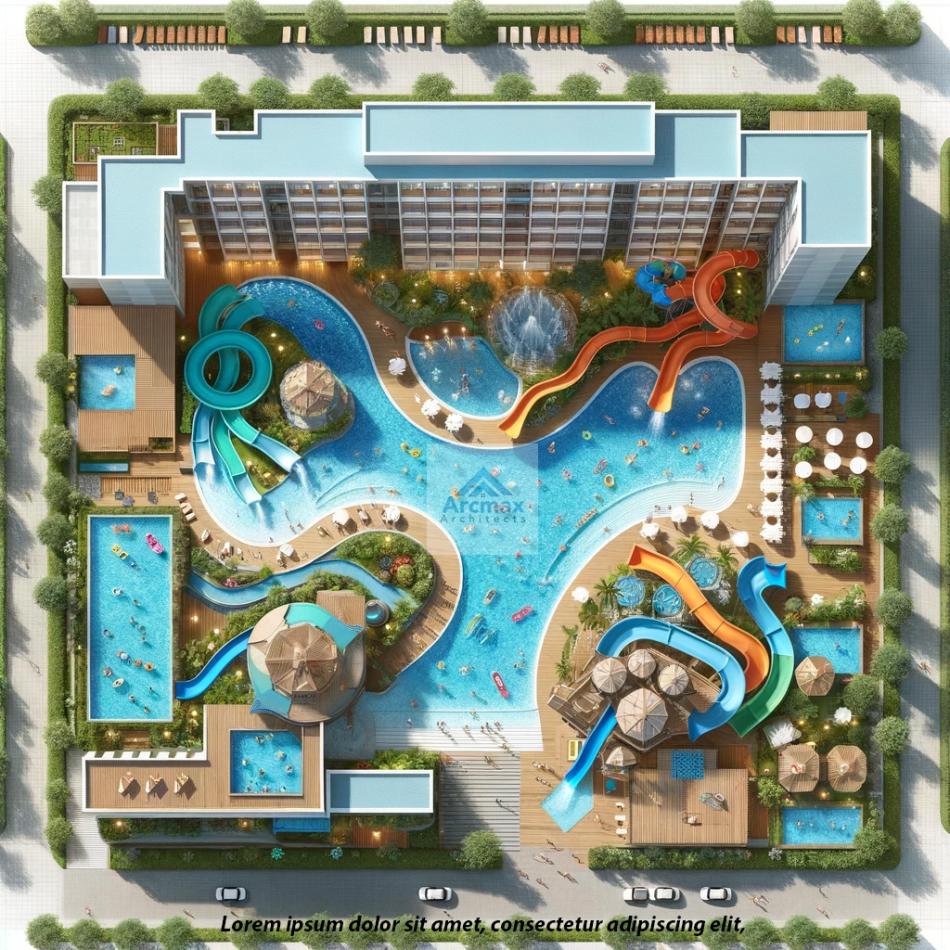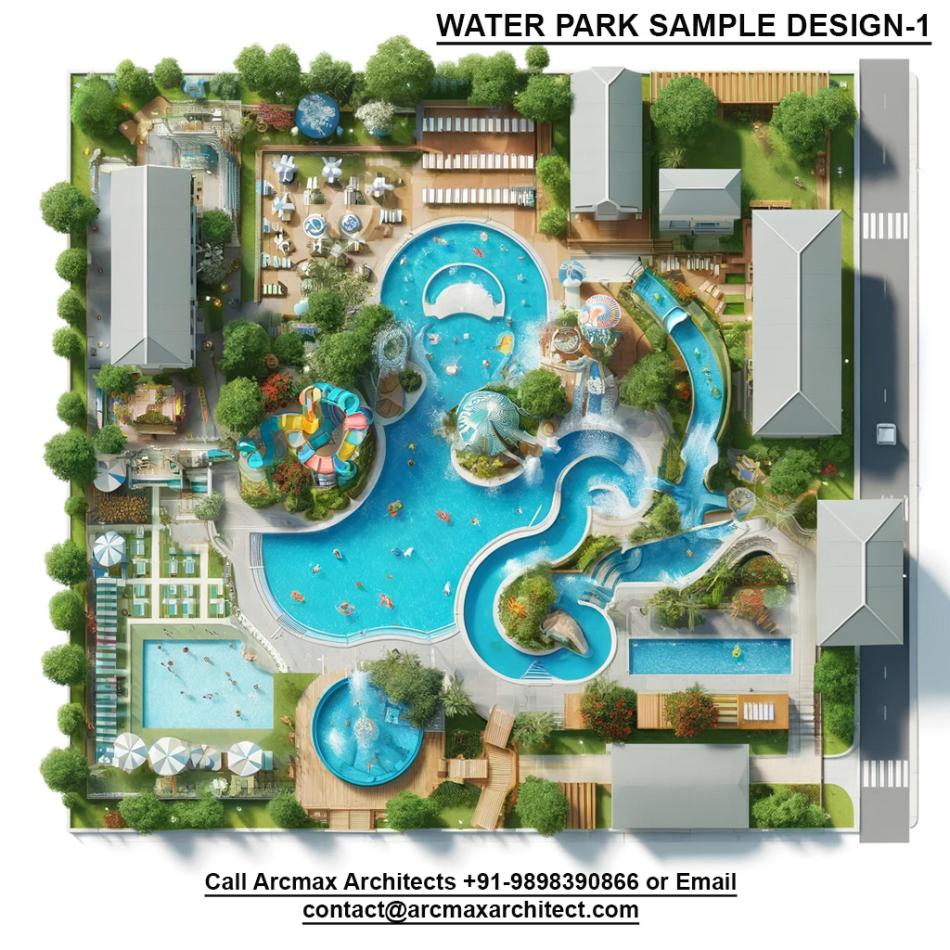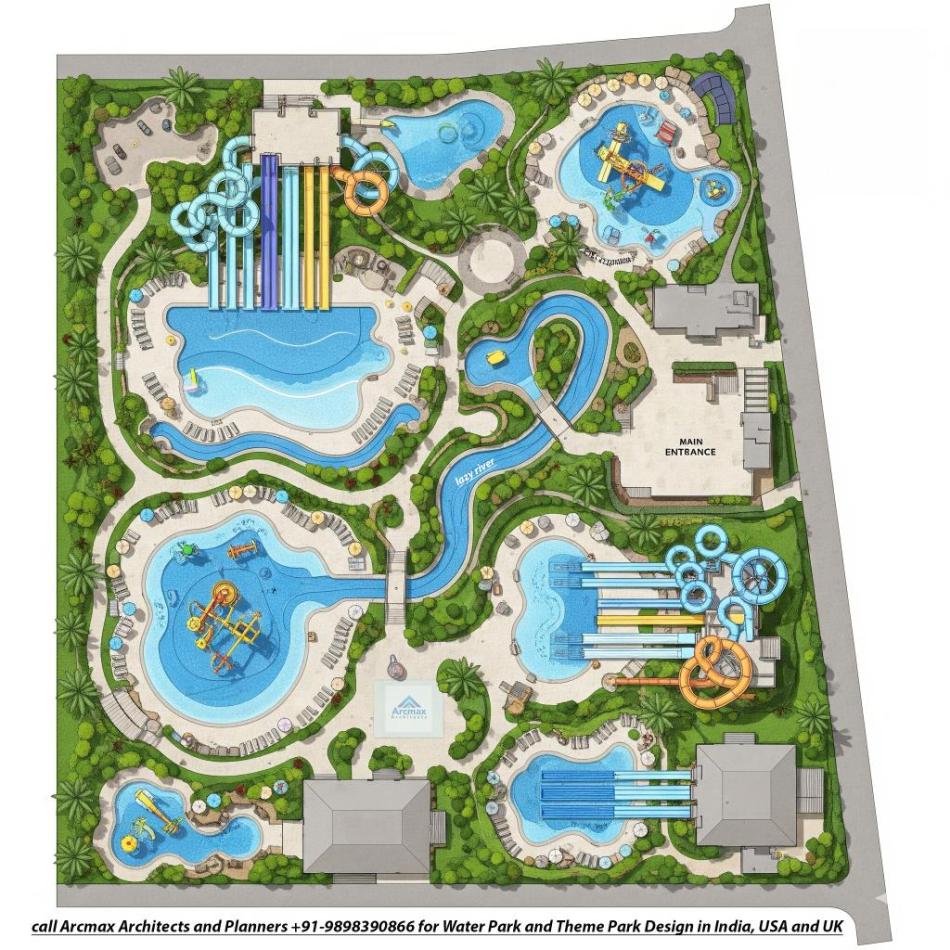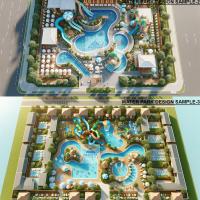Bakeri City, Pincode: 380015 Ahmedabad, Gujarat, India,
244 Madison Avenue, New York, United States
Our Client
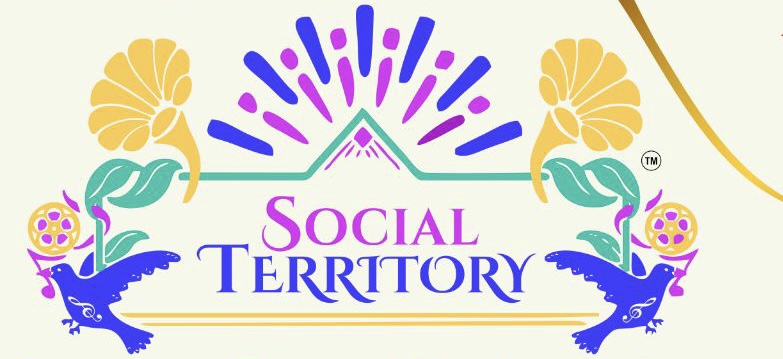

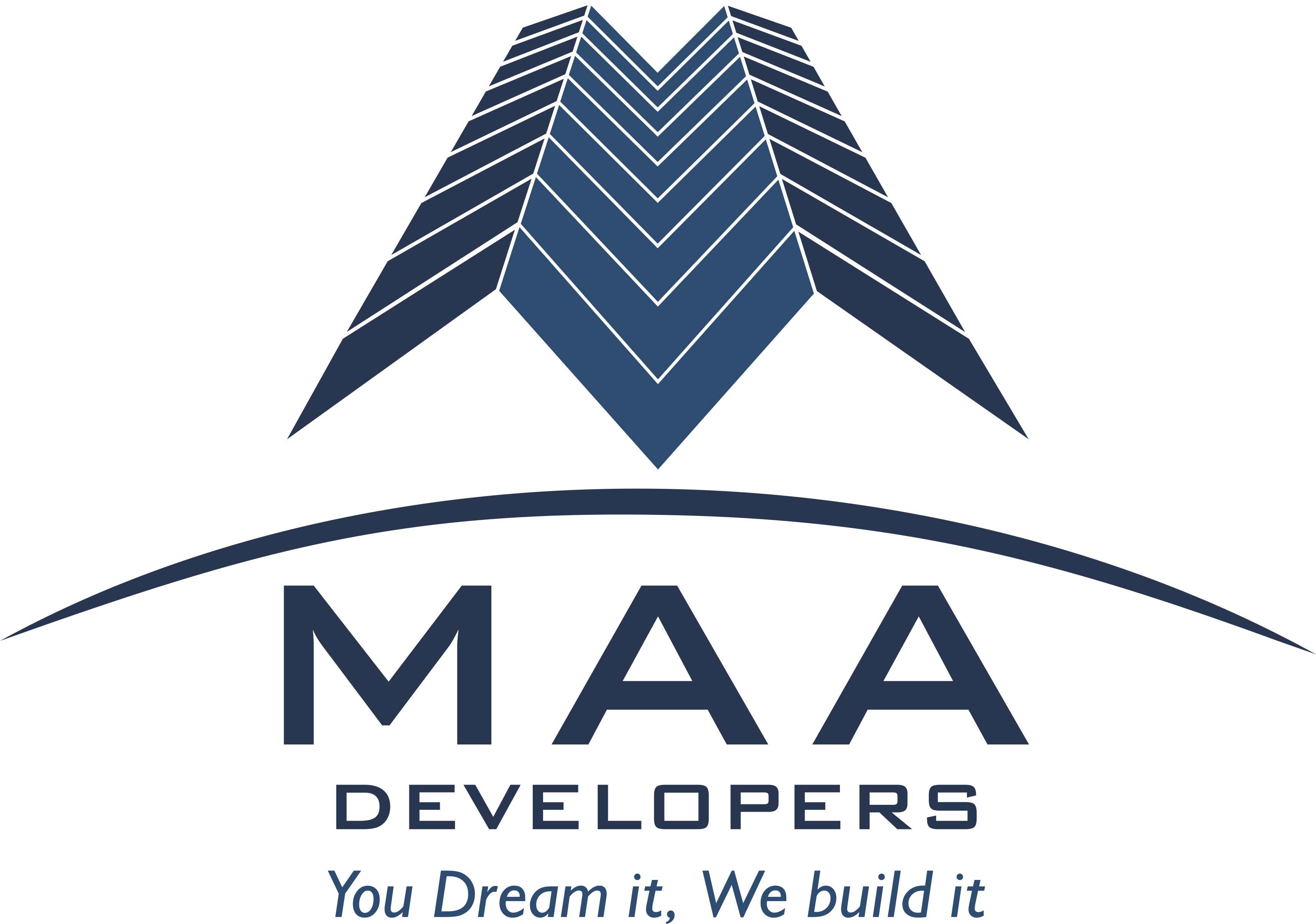



Comprehensive Guide to Designing a Successful Water Park: Master Plan Essentials
Comprehensive Guide to Designing a Successful Water Park: Master Plan Essentials: Water Park Design Master Plan By Arcmax Architects, call +91-9898390866
A well-crafted master plan is essential for the successful design and operation of a water park. This plan provides a comprehensive roadmap, guiding the development from concept to completion, ensuring that all elements work harmoniously to create a safe, enjoyable, and profitable attraction.
1. Concept Development
Vision and Theme: Establish a clear vision and theme for the park, aligning with target demographics and market trends. Themes can range from tropical paradise to adventure lands or fantasy worlds.
Market Analysis: Conduct thorough market research to understand the target audience, competition, and regional preferences. This analysis helps in making informed decisions about the types of attractions and amenities to include.
2. Site Selection and Analysis
Location: Choose a location with good accessibility, visibility, and proximity to potential visitors. Consider factors such as climate, land availability, and local regulations.
Site Analysis: Evaluate the site's topography, soil conditions, water sources, and environmental impact. This analysis will influence the layout and design of the park.
3. Layout and Design
Master Layout: Develop a comprehensive layout that includes zones for different attractions, amenities, and support facilities. Ensure logical flow and easy navigation for visitors.
Attraction Zones: Design distinct zones for various types of attractions, such as thrill rides, family areas, kiddie zones, and relaxation spaces. Each zone should align with the overall theme and cater to different age groups and preferences.
Safety and Accessibility: Prioritize safety in the design, ensuring compliance with all relevant regulations and standards. Incorporate features for accessibility, making the park inclusive for visitors with disabilities.
4. Attractions and Amenities
Water Rides and Slides: Select a mix of high-thrill rides, family-friendly attractions, and kiddie slides. Popular options include wave pools, lazy rivers, splash pads, and raft rides.
Support Facilities: Plan for essential amenities such as restrooms, changing rooms, lockers, and first-aid stations. Consider additional facilities like food courts, retail shops, and shaded seating areas.
Landscape and Aesthetics: Design lush landscaping and theming elements that enhance the visitor experience. Use vegetation, water features, and architectural elements to create an immersive environment.
5. Infrastructure and Utilities
Water Management: Develop efficient water management systems for supply, filtration, and recycling. Consider sustainable practices to minimize environmental impact.
Energy and Utilities: Plan for the provision of electricity, waste management, and other utilities. Explore renewable energy options to reduce operational costs and environmental footprint.
Parking and Transportation: Design adequate parking facilities and consider transportation options for ease of access. Plan for pedestrian pathways, shuttle services, and drop-off zones.
6. Operations and Maintenance
Staffing and Training: Determine staffing requirements for operations, maintenance, and customer service. Implement comprehensive training programs to ensure safety and quality service.
Maintenance Plans: Develop regular maintenance schedules for attractions and facilities. Implement a robust system for monitoring and addressing wear and tear.
Safety Protocols: Establish detailed safety protocols and emergency response plans. Regularly review and update these plans to comply with regulations and best practices.
7. Financial Planning
Budgeting: Create a detailed budget covering all aspects of design, construction, and operation. Include contingencies for unexpected expenses.
Revenue Streams: Identify potential revenue streams, including ticket sales, food and beverage, retail, and special events. Develop pricing strategies and promotional plans to attract and retain visitors.
Return on Investment: Analyze the projected ROI, considering initial investment, operating costs, and expected revenue. Use this analysis to make informed financial decisions.
8. Marketing and Promotion
Branding: Develop a strong brand identity that reflects the park’s theme and values. Create a compelling logo, tagline, and visual identity.
Marketing Strategy: Plan a comprehensive marketing strategy that includes online and offline channels. Utilize social media, partnerships, and advertising to reach potential visitors.
Opening Events: Organize grand opening events and promotional activities to generate buzz and attract initial visitors. Consider media coverage and influencer partnerships for wider reach.
Conclusion
A well-structured water park design master plan ensures that all aspects of development are meticulously planned and executed. By addressing every detail from concept to operations, the plan creates a blueprint for a successful, safe, and enjoyable water park that attracts visitors and achieves financial success.

